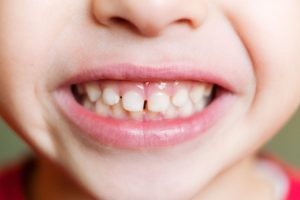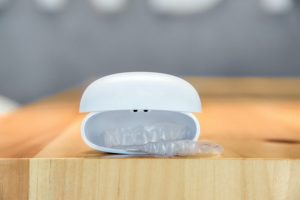NASAL You probably haven’t heard your dentist talk about oral rest posture before. If you have, kudos to them!
If you have not heard of this, let’s break down the basics…
Oral myofunctional therapy is the process of establishing proper oral posture, with three defined goals.
- Lips SEALED
- Tongue UP to the roof of the mouth
- Breathing through the NOSE
Nasal breathing is healthy breathing, and it is a major key to good overall health, less tension, and quality sleep. Nasal breathing cleans, filters, and humidifies the air as it enters the body, produces nitric oxide (NO) which increases oxygen carrying capacity to the body, and performs the same amount of work with less energy expended.
Do you have head, neck, shoulder, and back tension? Check your breathing patterns!
When people breathe through their mouths, it’s very hard for the body to use the diaphragm for breathing. Instead, the body recruits other muscles to help with breathing which we call ‘accessory muscles of respiration.’ These muscles are located in the neck and top of the shoulder, and normally kick on only when the body is performing intense bouts of exercise. However, with chronic mouth breathing, these muscles kick on even while we are at rest. When the muscles in the neck and top of the shoulder are used for respiration all throughout the day, they become short, tight, and overused. Strained muscles in the neck place increased stress on the joints in the neck, causing issues such as headaches and neck pain. Receiving treatment for pain in these areas can be very effective, however if the root cause of the issue is improper mouth breathing habits, the main goal of therapy must be to correct breathing patterns.
What else do we see with mouth breathing? Right now, we see A LOT of mask mouth, where people are breathing through their mouths more than ever! We are seeing an increase in red, bleeding gums full of inflammation, higher cavity rates, people breaking teeth due to clenching, and TMJ pain from having to hold the jaw in a strange position. If we constantly breathe through the mouth, pathogenic bacteria in the mouth are given a ready supply of oxygen to grow and duplicate. Additionally, these bacteria thrive off of a dry environment, and the mouth becomes very dry with chronic mouth breathing. When the mouth stays closed, saliva is able to flush out the oral disease causing bacteria from the mouth and into the digestive tract where they can be expelled.
SO…when you tell me you can’t breathe through your nose, I’m going to ask you WHY.
Why can’t people breathe through their nose?
Many times it has to do with improper oral rest posture. The muscles need to be strong enough to SEAL THE LIPS, REST THE TONGUE UP, and PRACTICE NASAL BREATHING.
- If the lips can’t seal, they need to be stronger, or we need to find out WHY they can’t come together without strain. Maybe the jaw bones are shaped improperly, or the lip ties are very tight.
- If the tongue can’t sit at the roof of the mouth, it needs to be stronger, or we need to find out WHY it can’t reach the roof. Maybe there isn’t enough space because the arch is narrow, or the tongue has a tie holding it down at some point along the muscle (yes, there are tongue ties only on the back part of the tongue!) Have your teeth shifted after braces, or do you have a small gap between your top and bottom front teeth?
- If the nose can’t breathe we need to find out WHY (try the cottle test, pull back on the skin next to your nose like a Breathe Right strip…is the nasal breathing any better? If it is, maybe a nasal dilator and decreasing the mucus in your nose is all you need). Maybe there is a deviated septum, or an adhesion of the nasal bones.
Moving on to WHY things like a high palate, a long draping soft palate that causes snoring, or a mouth that’s too small happen.
The ROOF OF THE MOUTH = The FLOOR OF THE NOSE
If the roof of the mouth is HIGH, NARROW, and V-SHAPED VAULTED, the floor of the nose is COMPROMISED.
- Chances are this person also had braces or an expander, has dry lips, has poor quality or light sleep, can’t breathe through their nose, had teeth pulled for braces, has head and neck tension, has trouble with a gag reflex and dental xrays, suffers from allergies or sinus/nasal issues, suffers from some type of chronic health issue (and if not yet, in the future). Maybe they had speech or feeding therapy as a child, and they likely were not breastfed.
If the roof of the mouth is WIDE, FLAT, and U-SHAPED, the floor of the nose is OPEN.
- Chances are, this person did not need a long round of braces, sits with lips sealed, can breathe through their nose, *almost* had room for their wisdom teeth, has decent posture and limited body aches, can take dental xrays with ease, has good quality sleep patterns, doesn’t have chronic allergies or sinus issues, and rarely has health issues. Many times they were breastfed.
IF THE TONGUE COULD NOT REACH THE ROOF OF THE MOUTH FROM THE TIME YOU WERE A BABY, THE TONGUE MUSCLE NEVER EXPANDED THE UPPER JAW AND MOUTH THE WAY IT WAS SUPPOSED TO! A STRONG, ELEVATED TONGUE IS THE FOUNDATION FOR PROPER NASAL BREATHING PATTERNS!!!
Have I described you, or someone you know?
THAT’S OK! We have the cards we are dealt, but how can I help you live a better life? What do we do about it now?
Sleep-related breathing disorders comprise multiple diagnoses that involve difficulty breathing during sleep. These include obstructive sleep apnea, snoring (YES, snoring has a MEDICAL DIAGNOSIS CODE), and upper airway resistance syndrome. These are caused by anatomical airway collapse and altered respiratory control mechanisms. Sleep, or lack there of, has been linked to MOST CHRONIC HEALTH ISSUES (cardiovascular disease, diabetes, anxiety, depression, fertility/reproductive issues, chronic pain, obesity, alzheimers, and early death, to name a few). This comes from decreases in oxygen to our brain and body repeatedly, for three seconds are more, over and over again, night after night. In children, undiagnosed and/or untreated sleep related breathing disorders can be associated with cardiovascular problems and impaired growth, as well as learning and behavioral problems.
It is also an issue for DENTAL WORK. Why? Because when we have a lapse in oxygen, or we have tension through our jaws because of poor oral rest posture, our muscles and teeth clench together and we BRUX (clench or grind our teeth – are you cracking teeth or fillings/crowns?), or our jaw is trapped back and hurts the joint (have you been told you have TMJ?)
It’s not uncommon in my practice for me to ask you how your sleep quality is, if you have trouble falling asleep or insomnia in the middle of the night, if you wake up multiple times to use the restroom.
THERE IS A REASON I ASK THESE QUESTIONS, and it’s getting to the root of the problem, for both your health AND your dental work that I want to last.
In 2017, the American Dental Association recommended that DENTISTS SCREEN for sleep-related breathing disorders as since DENTISTS are often the first to identify symptoms and discuss medical and dental history with the patient. Your primary care provider is not trained in examining the oral cavity and airway the same way your dentist should be.
So what do we do? We need to set up a full screening appointment. Your jaws are different than your neighbors, your brother-in-laws, your co-workers. You are an INDIVIDUAL. I use a three dimensional scan of your head and neck (CBCT), home sleep test, comprehensive health history, measurements, full body and mouth photographs, and digital impressions of your mouth to find out WHY you INDIVIDUALLY are having an issue.
Sometimes the jaw is too narrow or small, the soft palate is too long, the tongue tie is too tight, the septum is deviated. Sometimes it’s unrelated to the jaws. We help you find out the underlying issue(s).
How do we treat? Sometimes it’s as simple as strengthening the oral muscles. Sometimes we need to do a tongue or lip tie release procedure. Sometimes we need to make more space (expansion) in the upper jaw. Sometimes you go see a sleep physician. Sometimes we do nothing, because that’s what you wish for. Our role is to support you in your health decisions.
Interested in learning more? Schedule an airway screening appointment today at our Lakewood, Colorado dental clinic (303) 989-3192. You book online here, too.
Want to learn more about sleeping and nasal breathing and their connection to oral health? Visit this page here.




